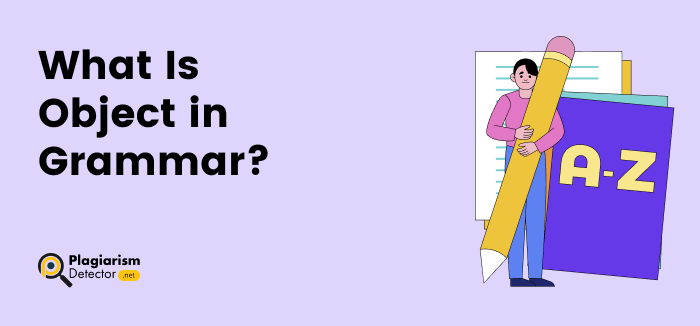How to Write an Essay [Step-by-Step Guide]
![How to Write an Essay [Step-by-Step Guide]](https://plagiarismdetector.net/blog/wp-content/uploads/2024/08/How-to-Write-an-Essay.png)
Writing an essay could be tricky. You must conduct proper research and pay significant attention to detail to write a comprehensive essay that fully backs the thesis statement. Those who take this process lightly often write a vague essay that fails to fit the scope and features all the necessary details readers need to learn about a particular topic.
Following these steps is essential if you want to write a perfect essay. Only some people know the steps to follow while writing an essay. This article discusses all the steps in detail to help you learn how to write an essay. Read on to learn more.
Selecting the Topic of an Essay
The first step in writing an essay is to choose a topic. The topic is the main idea or subject you will cover in the write-up. You must have a basic understanding of the topic you choose to write on. Your interest also plays a vital part in selecting an essay topic.
Essay writing on a topic that interests you will also help you showcase your essay writing skills to your targeted audience. To ensure impeccable writing, you must consider a few things before selecting the topic of your essay. These factors are listed below.
- Essay writing format and citation style.
- Critical or rhetorical essay writing skills are needed to prove various points.
- Primary, secondary, or tertiary sources are needed to ensure good essay writing.
- The objective of an essay.
- A few rules to write an essay.
- Presentation of information as an original research work, literature review, or analysis based on comparing two or more works.
Researching the Topic
You must start conducting research after selecting the topic. This step is essential to ensure the best essay writing. You must gather the information you will be adding to your essay.
To provide a comprehensively written essay, research requires using various resources, including publications, online databases, and reliable web-based platforms to gather accurate information.
It is worth mentioning that there are multiple ways to conduct research. Further details about these methods are given below.
- Primary research involves collecting firsthand information using surveys, interviews, and experiments.
- Secondary research refers to using existing published and online data from reliable sources. It also serves as a stepping stone to collecting firsthand information through primary research.
- Tertiary research includes gathering information about a particular topic using summaries or overviews of books, encyclopedias, and reference books.
Note: You can also use a cutting-edge online essay writer to gather information about a particular topic. It will extensively research the topic and generate a write-up featuring relevant researched material.
Creating an Outline for the Essay
After choosing the topic and conducting research, creating an outline is the next step to ensure impeccable essay writing in English or any other language. An outline serves as a roadmap that helps you understand how to cover various essay points. It should specify the introduction, various body paragraphs, and the essay’s conclusion.
The outline you create to write an essay should fit the topic’s requirements perfectly. It should specify the main features of the introduction, body paragraphs (including the main point, supporting evidence, explanation, analysis, and transition sentence connecting the previous section to the next one), and conclusion.
Writing the Introduction
An essay starts with an introduction. It is an essential part of your write-up as it is the first impression of your writing, tone, and topic. The main objective of an essay’s introduction should be to raise a question and provide a thesis statement in a couple of paragraphs. The introduction should present your point of view to the audience and hook their attention to make them read the entire content.
The best way to make it possible is to segment the introduction into three essential parts.
- A hook.
- Context or background information.
- A thesis statement that represents the main idea and scope of your essay.
Make sure you have covered all the segments above of your essay’s introduction in a couple of paragraphs featuring 200 words or less.
Adding the Body Paragraphs
You are now coming to the second part of the essay, called ‘Body.’ This part generally includes three paragraphs presenting three distinct ideas relevant to the topic. The number of paragraphs may vary based on the length of an essay.
According to the implemented rules for writing an essay, you should connect each body paragraph with the next using a transition word. You can do this by segmenting each paragraph into four parts.
- A topic presenting the main idea of any paragraph.
- Supporting or background information.
- A comprehensive analysis of the given information.
- A transition phrase to smoothly build a connection with the next paragraph.
Concluding the Essay
The sixth step involves adding a comprehensive conclusion to create a lasting impression and perfect closure for the essay. An essay’s conclusion generally features a single paragraph. However, its length may differ because of the overall size of the essay. You can divide an essay’s conclusion into three distinct parts listed below.
- Restatement of thesis statement.
- Summary of the arguments discussed in the essay.
- More significant implications of the thesis statement or a call to action.
Note: The reader should quickly identify the conclusion, so start with words that reflect the closure of your writing. These words could be to conclude, in conclusion, in the end, or the takeaway.
Reviewing and Editing the Essay to Ensure Impeccability
The final step is reviewing, proofreading, and editing the essay like any other write-up. Doing so helps ensure impeccability and avoid mistakes that negatively impact a reader. While manual proofreading can help you determine significant areas for improvement in the content and edit your write-up to remove them, an average human eye can’t identify slight mistakes.
Ensuring a plagiarism-free essay is also essential. Manually proofreading content to determine flaws and comparing an essay with multiple sources to find plagiarism takes significant time and effort.
The best way to ensure an impeccably written essay is by using advanced tools. An advanced online essay checker tool will swiftly identify shortcomings in writing and suggest necessary changes promptly to help you ensure quality content. Similarly, an advanced AI-backed plagiarism checker leveraging an extensive database will highlight plagiarized sections in your essay. You can rewrite such sections after their identification to avoid plagiarism.
In The End
Writing a meaningful essay may become tricky if you don’t know the various phases and steps to craft a perfect academic or professional essay. This article discusses each step of writing an essay in detail.
Reading it will help you gather plenty of takeaways you can consider while writing an essay to fit the needs of the audience who take an interest in the topic you have covered through the essay. Hopefully, you have understood all the steps to write an essay and use them while crafting one for academic or professional purposes. We wish you luck with the process!
To write an incredible essay choose the essay topic, research it, create an outline, and write an introduction and body. Concluding the essay briefly.



